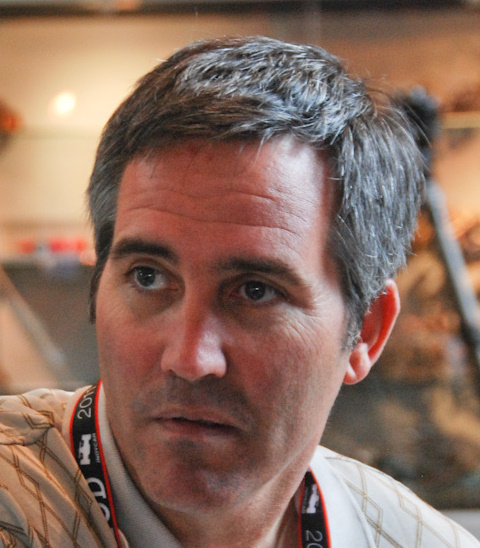Randy Bernard brings Buzz, Excitement back to IndyCar
 |
| Randy Bernard |
The racing circuit has lost millions of fans since the 1990s. Bickering among racing teams, track owners and promoters robbed the industry of energy and direction. The field was embarrassingly mediocre some days. Your grandmother could qualify.
Stands are often empty. Tracks lose money. Too many of the sport's remaining fans are old. The sport needs promotion, innovation, sponsorship and TV time.
I don't know whether Randy Bernard will bring the IndyCar circuit back to the roaring days of A.J. Foyt and the Unser family. But the former bull-riding impresario is changing the rules, creating buzz, selling the sport to new audiences and making it part of the 2010s instead of the 1970s.
The other broken-down racing industry — the one with steeds from Maryland and Kentucky instead of Detroit — needs to take notes when Bernard and IndyCar stage the Baltimore Grand Prix next weekend.
Want to revive a racing business? Don't stand around begging for government support and slot-machine welfare. Fix the product.
"We want to see it come back to where it once was in '95, '96, to be the top motorsport in the U.S. and possibly the world," Bernard, who took over as IndyCar CEO last year, said in an interview. "The better we give with the experience, the more you'll want to come back."
When Bernard became CEO of Professional Bull Riders in the 1990s, it was a rodeo offshoot with a tiny budget and fewer than two dozen riders.
Recruiting sponsors such as Enterprise Rent-A-Car, he turned animals like Bodacious ("the most dangerous bull in the world") into stars, along with the cowboys. Lots of people, including riders, got rich. Bernard and the original investors sold two-thirds of the business in 2007 to a New York private-equity firm in a deal that reportedly valued the business at $100 million.
IndyCars are more or less the U.S. version of what's known as Formula One in Europe — low-slung, one-seat capsules with wheels outside the body. The sport went off the track in America after the people who run the Indianapolis Motor Speedway set up a competing league in the 1990s and degraded the Indianapolis 500 by limiting entrants from the rival circuit.
Meanwhile NASCAR took over as the top U.S. motor league and the Daytona 500 surpassed the Indy 500 in television viewership. The open-wheel racing schism lasted until 2008.
Bernard keeps telling the motor press that he's just begun to transform and promote IndyCar, but it's a heck of a beginning.
He immediately began emphasizing the risks of Indy racing and figuring ways to make it more dangerous. One might get the impression after talking to Bernard that NASCAR, with a roof over the driver and fenders over the wheels, is a ride on the Ocean City boardwalk. When unprotected IndyCar wheels bump at 150 mph, cars often hit the wall.
This year, IndyCar introduced "double-file restarts." Instead of restarting the race in single file, cars line up two by two after a caution signal and jockey for position when the green flag goes up.
The new procedure — especially dicey on twisty street courses like Baltimore's — prompted driver complaints, crashes and lots of news coverage. Television viewership, even for IndyCar's lousy TV contract, goes up for restarts.
Bernard seems especially pleased with the July IndyCar race in Toronto.
"Nine restarts," he said. "A lot of drama. A lot of wrecks. A lot of controversy." Plus: "Will Power calling Dario Franchitti a 'wanker.' On TV!"
Actually, it was Alex Tagliani whom Will Power was talking about. If you don't know that Power, Franchitti and Tagliani are IndyCar superstars, Bernard has more work to do. If you don't know what a wanker is, rent "Coronation Street."
The Baltimore race will have bigger, better video screens around the track than the circuit featured last year. There'll be an enhanced driver intro stage, with better fireworks and extra elevators.
"Dario comes up in his car," said Bernard. Other drivers rise through the stage floor.
Bernard opened a Hollywood office to get movie people interested in Indy cars. He's talking to companies such as Raytheon and Electronic Arts about better technology not only for cars but for video games and other media.
He's in touch with Verizon about making drivers' rear-view mirrors digital and broadcasting the image live to your Smartphone. For next year, he is dumping IndyCar's cookie-cutter specs, making room for engines from Lotus and Chevy in addition to incumbent Honda.
Inside the organization, away from the cameras, Bernard is trying to get former opponents in the Indy car civil war to stop sniping and start bringing back fans.
Independent promotion by IndyCar sponsors (on top of what they pay IndyCar — think of the GoDaddy ads with driver Danica Patrick) rose from $34 million in 2009 to $175 million this year, Bernard said.
He's working on more direct sponsorships, too. But it's not just about money.
"If someone wants to write us a check, but not one extra person tunes in to watch our races or learns about our drivers, that isn't really benefiting IndyCar," Bernard told Marshall Pruett of Speedtv.com this year. "I won't take a check unless it helps to raise everything up."
I'm not suggesting that the Maryland Jockey Club should promote crashes on the track or trash talk among the jockeys. But thoroughbred horse racing badly needs a Randy Bernard. And he's nowhere in sight. Baltimore Sun
